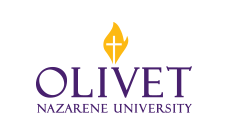Faculty Mentor(s)
Dr. Cathy Anstrom
Project Type
Departmental Honors project
Scholarship Domain(s)
Scholarship of Community Application
Presentation Type
Poster Session
Abstract
Learning Outcome: To increase awareness of the nutrient density of food selection provided by local food pantries through purchase and donation.
Introduction: Wright et al. (2020) noted a recent shift of the need from short-term food assistance to long-term food assistance. There are concerns that food selection at the food pantries are not meeting client nutrient needs. The goal of this current study is to bring awareness to the nutritional adequacy of food donations accepted at local food pantries. To accomplish this food pantry managers need to be aware of the nutritional content of food donations for both short and long-term assistance.
Methods: A qualitative design was used. Data was collected by conducting interviews (n=7) with food pantry managers over the course of a month. Questions adapted from Barone et al., (2020) were used. Interviews took 30-60 minutes. Data was transcribed, coded, and analyzed using Thematic Analysis.
Results: Interview coded responses indicated thematically that there is a difference between food purchased vs. donated at the food pantry in terms of nutrient density. Food purchased from the food bank or donated from major grocery chains were nutritionally dense. Food from church donations varied in nutritional density. Food pantry clients prefer food they are familiar with or using as an ingredient or as a meal component.
Implications: More research is needed to investigate the nutrient density of food selection at food pantries. RDNs can provide education concerning the nutrition density of foods to managers and clients. Education could include recipes and packaging pantry items together to make meal preparation convenient. Even with the availability of nutrient dense foods, clientele still may not select healthful foods.
Funding: There was no funding for this research.
Note: This poster was accepted to be presented at the Food and Nutrition Expo and Conference (FNCE, National Conference) in October 2022 in Orlando, Florida.
Permission Type

This work is licensed under a Creative Commons Attribution 4.0 License.
Included in
Community Health and Preventive Medicine Commons, Dietetics and Clinical Nutrition Commons
The Relationship Between Food Pantry Donations and Nutritional Density of Food Selection
Fishbowl
Learning Outcome: To increase awareness of the nutrient density of food selection provided by local food pantries through purchase and donation.
Introduction: Wright et al. (2020) noted a recent shift of the need from short-term food assistance to long-term food assistance. There are concerns that food selection at the food pantries are not meeting client nutrient needs. The goal of this current study is to bring awareness to the nutritional adequacy of food donations accepted at local food pantries. To accomplish this food pantry managers need to be aware of the nutritional content of food donations for both short and long-term assistance.
Methods: A qualitative design was used. Data was collected by conducting interviews (n=7) with food pantry managers over the course of a month. Questions adapted from Barone et al., (2020) were used. Interviews took 30-60 minutes. Data was transcribed, coded, and analyzed using Thematic Analysis.
Results: Interview coded responses indicated thematically that there is a difference between food purchased vs. donated at the food pantry in terms of nutrient density. Food purchased from the food bank or donated from major grocery chains were nutritionally dense. Food from church donations varied in nutritional density. Food pantry clients prefer food they are familiar with or using as an ingredient or as a meal component.
Implications: More research is needed to investigate the nutrient density of food selection at food pantries. RDNs can provide education concerning the nutrition density of foods to managers and clients. Education could include recipes and packaging pantry items together to make meal preparation convenient. Even with the availability of nutrient dense foods, clientele still may not select healthful foods.
Funding: There was no funding for this research.
Note: This poster was accepted to be presented at the Food and Nutrition Expo and Conference (FNCE, National Conference) in October 2022 in Orlando, Florida.


